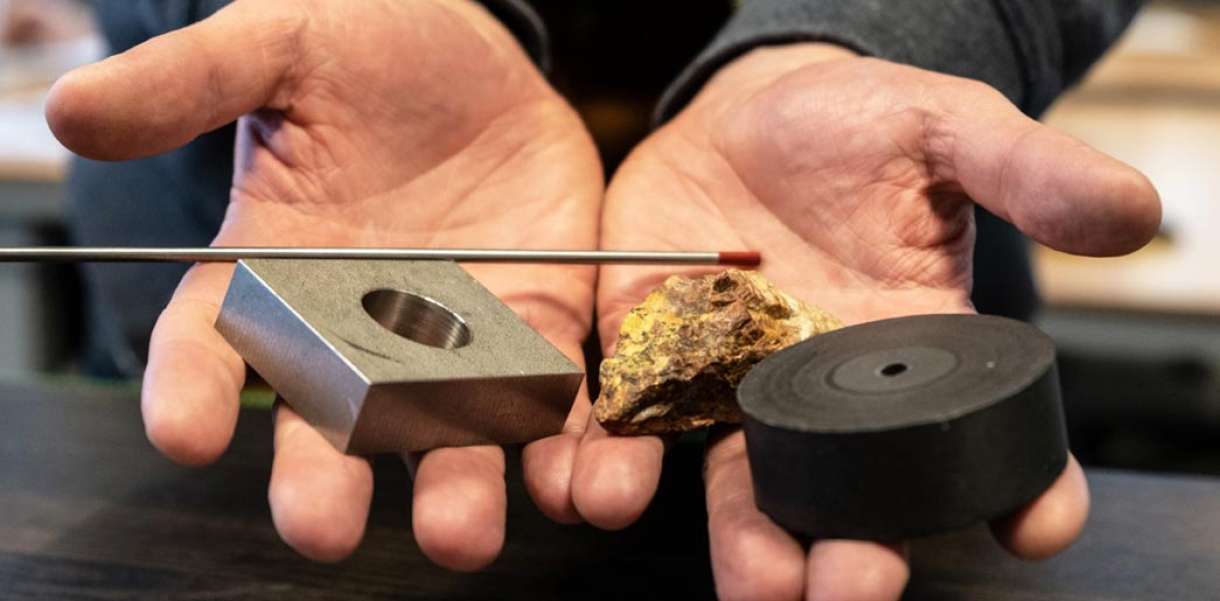What's the design?
Nuclear energy has an adverse reputation, but Seaborg Technologies is changing that. The Danish company is developing a world-first nuclear reactor that's impossible to meltdown. Their CMSR reactor is safer, more sustainable and, with widespread deployment, will mean fewer fossil fuels, reduced carbon emissions and cheaper energy for consumers.
The hurdle
"We started this business because we had to show people something they couldn't see yet," Co-Founder and CEO Troels Schönfeldt tells us about the initiative behind Seaborg. Back in 2015, he was in the pipeline for a well-paid job as CTO at a competing company. But, instead, decided to bet on himself and his co-founders for one simple reason: "I didn't think their idea was as smart as ours."
Schönfeldt ran Seaborg for a year without pay while financing the company through consultancy work. During that time, he became the company's CEO. "I was convinced that Ask (co-founder, later COO) would be the CEO. He's very diplomatic, and I'm more ruthless, but the constellation between us is amazing. A CEO needs to be a leader, and I go for things without compromise. But sometimes we have to compromise, and that's when Ask steps in. But the opposite constellation wouldn't have worked."
While transitioning into the CEO position, another problem presented itself: How does a group of scientists run a business? Without any prior knowledge, it turned out to be "a full-time position just to figure out how to register and pay taxes," Schönfeldt explained. "I needed someone to come on board and teach me this stuff."
In the beginning, Seaborg was hesitant about getting big investors on board, even though big figures were being put on the table. "Had we taken €130,000 for 10% equity that early on, which is tempting when you don't get paid, I'm not sure we would've made it," he says. "We wouldn't have learned how to conduct business independently, and our equity-share would have been way off."
The strategy
Instead of accepting a huge financial investment, Schönfeldt instead looked for mentorship: "We told an investor, Navid Samandari, that we weren't interested in his money currently, but that I needed mentorship on being a CEO," Schönfeldt remembers. "He agreed and told me to come by his office regularly to tell him what I did and what I intended to do. "He didn't do much other than listen and explain why I failed and, after a year, I felt like he'd done some very important due diligence."
Then in 2016, Schönfeldt decided he needed to expedite his business understanding: "Samandari put me in contact with Søren Jessen Nielsen, and then I asked for Samandari's investment to finance his consultancy services. We made a deal, and he became a co-founder because we also really wanted a serial entrepreneur on the founding team. Now we were six founders, and the company really took off from there."
But, six founders and a growing number of volunteers raised questions on equity-share. "My advice is: until you find investors, don't be afraid to redistribute," says Schönfeldt. "We started by having complete equal ownership and then we took some rounds where we redistributed depending on how we work. You just have to be understanding of each other and be fair to both yourself and your co-founders."
Tips from the entrepreneur
- Choose the right CEO – Having many co-founders isn't usual these days. But choose your CEO carefully. Do some thorough reflection, discussion, and if need be, testing on the best company constellation;
- Find a mentor – Sometimes, human capital is the most valuable form of capital. Look for a mentor that believes in the project and that you can be yourself around. Having an experienced entrepreneur on board early can give your business development a real boost at the most critical times;
- Have dynamic equity – Stocks and shares don't have to be set in stone from day one. Reevaluate them as the company grows and make changes based on the current circumstances or desires;
- Don't force values, create cultures – You can't force company values, but you can build a working environment that fosters them. For starters, make sure your vision is clear, understandable and relatable, it'll help unite the company.




